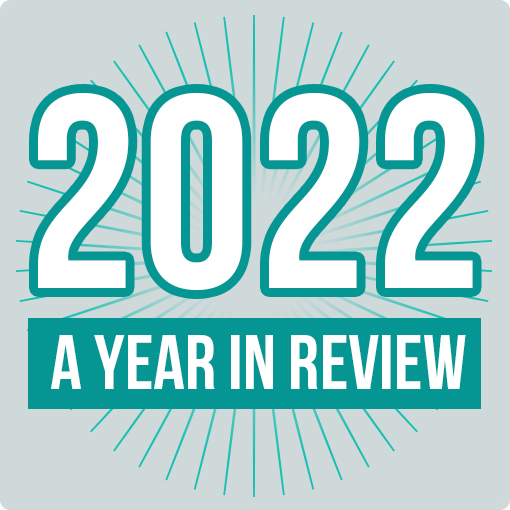The impending end of 2011 brings with it the opportunity to plan your website marketing for 2012. So how do you create a plan for something that works in an environment that seems to change on a weekly basis? Yes, it’s a challenge but not an insurmountable one. This month I offer a dead simple framework to guide you through the steps necessary to create a plan that has a strong chance of being implemented.
My suggested format is straight out of a recent read I finished last month – “The Primes” – written by Chris McGoff, founder of The Clearing Inc, a Washington DC-based strategic management consulting firm. It’s a book that, on first glance, looks rather light on content but delivers some solid practical punch with the concepts it covers. I’m going to borrow one of these for the task of website planning.
But first, a few words on the concepts themselves and the reason why they ended up in the book. Chris describes them all as “Primes”. These are proven consulting theories that need to be followed exactly as described to deliver the required outcome they promise. Personally, I really love things that do this. Here at Permission we have a number of processes we follow to help deliver email campaigns, improve search rankings and optimise websites. Each of them relies on a standard approach that, when followed, does exactly like Chris’s Primes do – produce reliable results.
The “Prime” we are going to use today covers the required process to effect change through effective strategic planning. Here’s a picture of it.
I’m going to summarise the key points of this graphic and then apply it to your website planning process for 2012. There’s much more detail in the book, so best you either get along to your local library and grab one or here’s the non-affiliate link to find it on Amazon.
Here’s how the graphic reads.
As Is
This is the state your website is in now. So, for a web plan that would be the number of visitors your website receives, its existing conversion rate, bounce rate and, say, the % of traffic from organic and paid searches. All the key stats that reflect how well or poorly you currently market your website. Then include some bits on how easy/hard it is to add new content, and the frequency new content is added. Add how testing is run across the key web pages, the suitability of the technology you use, and even how the site compares with your competitors, etc. Everything that matters about your current situation that you and your team can agree on.
Environment
These are the things that you have no control over but that can affect your plans. The economy for instance, or your competitors’ activities. Maybe how social media may grow or wane. Or even the speed at which the roll out of super-fast broadband occurs. Or perhaps closer to home – how much budget a parent company may make available to subsidiaries for marketing. All are out of your control but in their own way affect what you do to creatively capitalize on them.
To Be
This is the vision thing. The good part where most love to sit back and dream away about what could happen in 2012 if everything fell into place. Compared with the ugly reality of the “As Is” stage this is nice, comforting and comes with a paucity of facts to challenge your ideas. It’s exciting, safe and therefore where the majority of time is spent when the task of “planning” raises its head.
Now a website “To Be” plan could well do with some stats to hang our vision on. So, your future numbers could include the % change in conversion rate your site will achieve or the rise in visitor numbers or page views due to your search rankings improving. A simple spreadsheet could be produced that showed by tweaking just a few variables – such as visitor count and conversion rate – how many more leads the business could bring in. Oh, it’s a great space to be in.
Strategy
This links the harsh reality of “As Is” to the glowing blue sky visions of the “To Be”. Some may write in here one line that says something like “engage a proficient business to help us” :). But while it’s an opportunity for us it’s not the full story of what really needs to be done.
Just refer to the “Simple Conversion Principles” article mentioned earlier in this newsletter. It would be no surprise to learn that nearly all great conversion rate changes occur once web managers know more about their web visitors’ desires and their methods of traversing their website. So a strategy of research and website tracking should be somewhere in your plan. Likewise, growing traffic is all about giving Google what it wants so it can’t help but improve the website’s ranking. Creating this “stuff” takes time but it’s just work not super-technical uber-geek stuff. So, an ongoing content creation strategy should be in the plan somewhere.
Stake
This is the last and probably most important piece of the whole process. It’s the part that many miss out from their plans – me included – but contains the core driving force that decides if all your work remains stuck in a folder gathering e-dust or if it gets reviewed and applied on a regular basis.
Stake = what happens if none of this is completed?
Never underestimate the pull of remaining in the “As Is” environment – it’s very strong. To break these bonds the Stake needs to be clearly articulated and agreed on by those involved in the plan. Writing this point reminds me of a stage in our initial customer review process that we take people new to Permission through.
When I look at it, this review is really a very detailed “As Is” discovery process. We detail a ton of facts – the website’s current conversion rate, how well it performs in Google and if any advertising channels are optimised properly. After this process, I get to a stage where I’m supposed to ask the question “So what does it all mean if none of this changes?”
To be honest I’ve always felt it was a bit too slick and “salesperson-like” to ask this question every time so it hasn’t seen the light of day in every session. (Based on reading this book I can assure you this will now change.) Anyway I’ve had a mixed bag of responses. But in every case, those who have a real problem they need to solve are the ones that get stuck into their site changes with gusto and work quickly with us to achieve some fast and dramatic change. The ones who face a slight annoyance if nothing alters, well, we can spend more time motivating for change to occur than actually delivering it.
So if the stake is weak – then so is the chance that the strategy will be applied.
Now I don’t want to scare people but here are just a few items at stake in most markets advertising online. These may help start you thinking about what’s really at stake if your plan doesn’t get implemented.
Your competitors improve their search engine optimisation faster than you do so your search rankings slide downwards at a rapid pace, which in turn dramatically shrinks your visitor counts.
The cost of offline media that drives your website volume increases and with it the resulting cost per lead, so much so that the economics of your business just don’t work anymore. Meanwhile, your competitors are fine as they own websites that convert at a greater percentage than yours.
And likewise, smarter competitors drive up the cost of Google AdWords bids to a level that’s sustainable for them – as their website converts so well – whilst in the process forcing you out of the online marketing market.
Through the lack of advertiser support the local newspaper market dies a gradual death, leaving you only the online space to advertise in but, due to the previous point, you can’t afford to enter the market.
Now we see some of these changes occurring at different levels across all of the industries we work in. You will probably have more you can add to your “Stake” part of your plan. My recommendation is to get stuck in and spend as much time here as you did with your “As Is” and “To Be” stages – they all deserve the same amount of attention.
When I look back at my own experience with business planning – both on the creating and implementing side – a lot of what Chris’s diagram and his additional commentary covers seems to ring true.
For instance, I once worked for a firm that had as its goal to achieve a specific turnover value – I forget the exact amount they were shooting for but say it was $200 million, up from the $50 million in revenue they were already at. It was a sizable step upwards. We were all told that for some reason $200 million was the magic number and we all had to work hard to aspire to reach it.
Now, producing a four-fold improvement in top line revenue is never going to be easy. And while they purchased some companies along the way to get closer to the goal, there were never any transformational changes made in their product selection and sales approach. The pull of doing what had always been done was just too inviting not to keep doing it.
So what was really at stake here? Now when I look back I can never remember the discussion of what would happen if we missed this number. And likewise, there wasn’t much comment on how things worked currently – the good and the bad (As Is) and what it would look like when we got to where we needed to get to (To Be), other than a line item on a set of financial accounts. Needless to say, the strategy failed to shift peoples’ behaviour and, other than a few blips of revenue through the consolidation of purchased businesses, the company stalled and ended up going backwards.
Then there was the opposite situation I was involved in when things really fired. This goes back to my experience selling business forms printing for a company that had just purchased a bright, shiny Japanese printing press that sat idle waiting for work. Our sales office was on the second floor, looking down at the very quiet machine.
The owners of the business sat down and spelled out the Stake part of the strategy while we all sat looking down through a window at a very quiet, very inactive and very expensive printing press. They told the whole company that if the press wasn’t kept busy through both the day and most of the night then this business would fail and with it so would our jobs. You couldn’t get much clearer than that.
With that simple but powerful statement we had the “As Is”, “To Be” and “Stake” parts our process nailed – all we needed was the strategy. We bumped away refining this part over the next 3-4 months but always motivated by the view of the rather sedentary machine below. Well it worked. The sales began to take shape and the revenue started rolling, as did that Japanese machine.
Funnily enough once the stake is clear, motivating and agreed by everyone then the rest just starts to follow. Perhaps that’s the secret right there for you on how to end 2012 so much further ahead than 2011?



